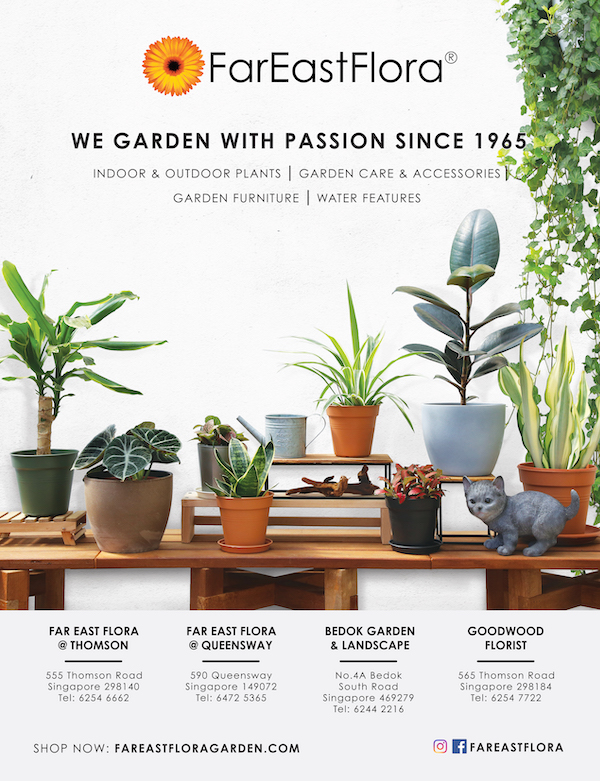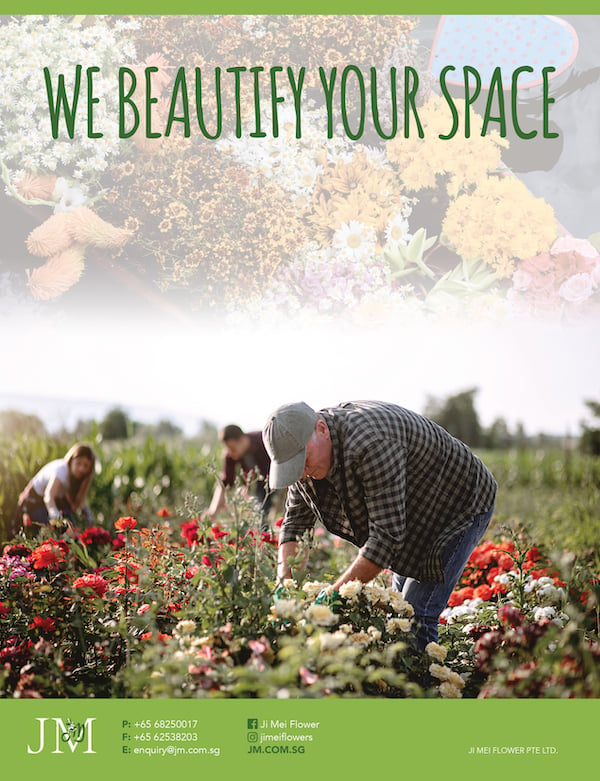Singapore has been known as the Garden City since the founding Prime Minister Lee Kuan Yew first introduced the vision in 1963. This vision was implemented through a tree-planting program, and more than 55,000 trees were planted by the end of 1970. Today, the current Prime Minister, Lee Hsien Loong, continues the tradition.
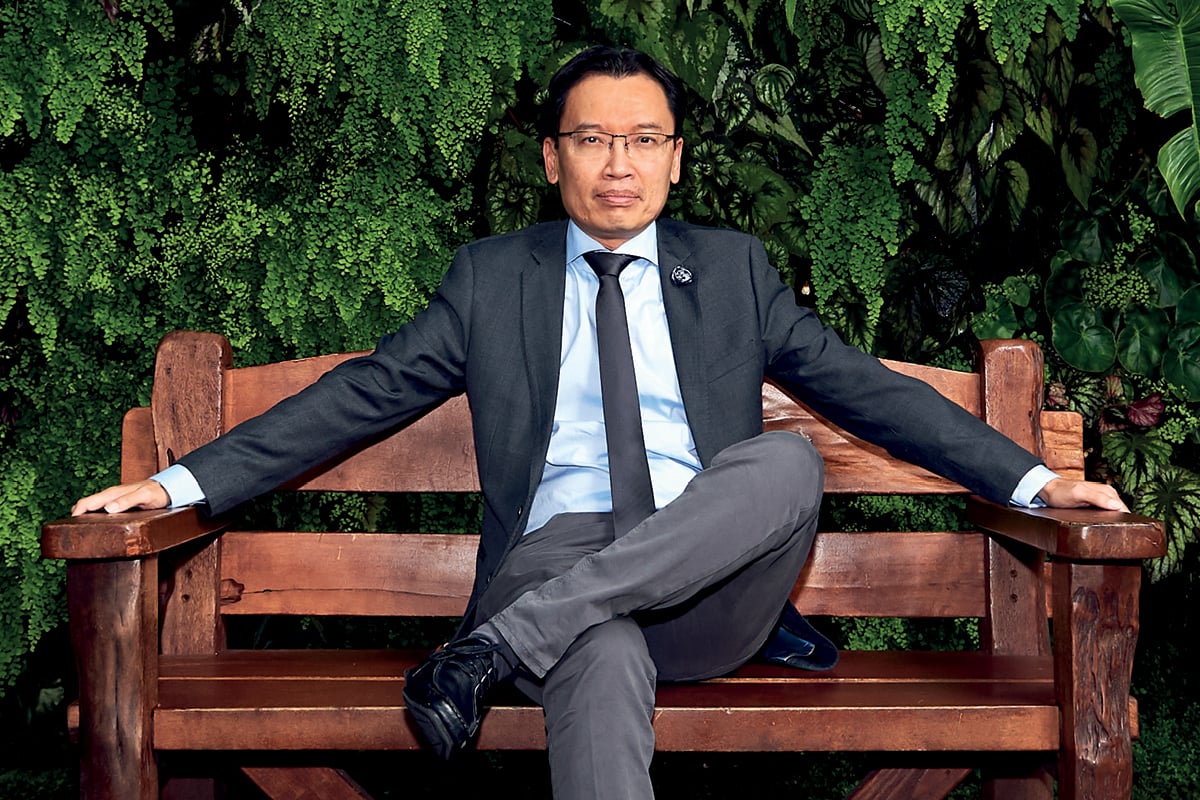
“Fifty years later, if you swing by our Changi Airport and travel to the city, it’s still majestic,” CEO Felix Loh says. “You can see our rain trees and flowering shrubs island-wide. We have gone through quite a landscape transformation for a small island.”
In 1998 a new vision was unveiled, called City in a Garden, which aimed to take Singapore to the next green level, by creating a city nestled within a garden. “Encapsulating decades of Garden City know-how,” Felix explains, “our government sought to introduce more greenery and biodiversity into the urban landscape, from roadside greenery to skyrise greenery and nature areas.
Then they ordered a showcase garden.” On a plot of reclaimed land next to the current downtown and the famous Marina Bay Sands, an expansive garden called Gardens by the Bay was created. As CEO, Felix carries on the vision of building an inclusive garden that Singaporeans from all walks of life and different socio-economic statuses can visit for generations to come.
“The founding CEO of Gardens by the Bay, Dr Kiat Tan, wanted this garden to be a people’s garden,” Felix says. “He wanted to reach out to those I call the ‘unconverted’. These are people who may not be fixated on plants but get excited by the wow effect of a garden. He wanted to build a show garden, so people who visit get interested and start a green journey.”
Gardens by the Bay is not merely a garden; it’s an immersive experience into the world of flora. There are cooled conservatories with changing floral displays featuring flowers not typically seen in Singapore such as the cherry blossom or sakura.
The Gardens stretches across 101 hectares and consists of three garden areas. If you’ve been there, or searched for photos of it online, it looks like a scene from another planet. The Gardens inspired the planet of Xandar in the film Guardians of the Galaxy, and it has been featured in several other Hollywood movies.
The Gardens has become a major tourist attraction, welcoming 12 million visitors each year. “People tell me that with this number of visitors, we are in the league of theme park attractions, like Universal Studios or Disneyland.”
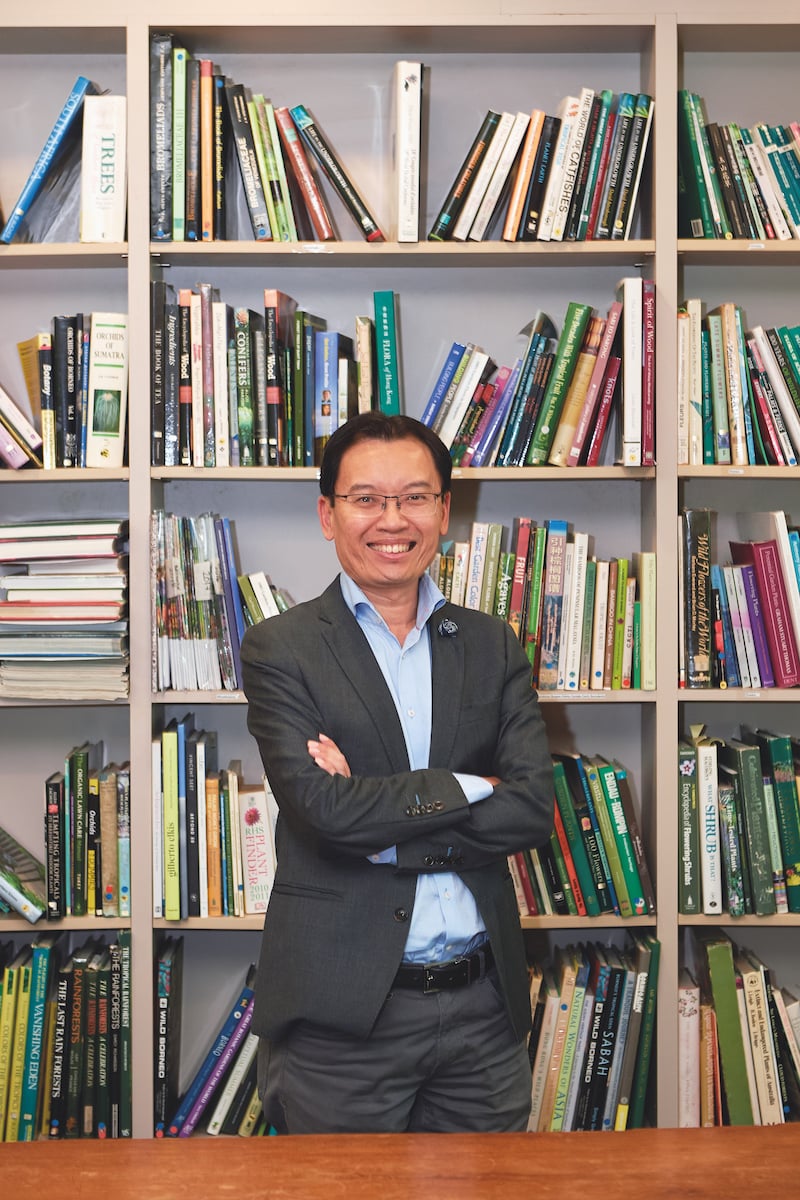
Being in this league brings a different set of challenges. The Gardens must cope with the growing number of visitors. “We constantly need to refresh and change our displays so that we attract repeat visitors to the Gardens,” Felix explains.
“Our visitors are our greatest supporters. Without them, I think Gardens by the Bay would not be where it is today.”
It takes a multitude of people to upkeep the gardens and make sure they stay immaculate. Initiated by a small group of horticulturists, there are around 100 today ensuring the grounds remain green. There is also a research department that is always looking into innovation.
“We have a group of back-end researchers and horticulturists who appreciate our core expertise,” Felix says.
“When we realised that we were fast becoming an international attraction, we brought in more business, marketing and frontline staff to help keep the Gardens working like clockwork.”
A group of 1,000 volunteers also supports Gardens by the Bay. “We built our volunteer base from scratch initially,” Felix says. “They’re very dedicated. They come in every morning, help to maintain the plants in the conservatories and outdoor gardens, and make sure the spaces are spick and span.
“We also have volunteers helping us during weekends to conduct tours,” he adds. Felix believes Gardens by the Bay brings joy to its visitors. People who wander through the Gardens feel a sense of wonder, and it’s clear that this is intentional with the slogan on its website, ‘where wonder blooms’.
“Our visitors are our greatest supporters. Without them, I think Gardens by the Bay would not be where it is today.”
Felix reflects on a particular moment when the Flower Dome was first full of flowering cherry blossoms. “I’ll never forget it,” he says. “We saw young people and elderly people who may have never seen anything like it in their entire life come in. Some of them were getting up close to the cherry blossoms with tears in their eyes. It brings wonder to them. This motivates my staff to want to do more; to bring in more interesting nature that our visitors can come and experience.”
The Gardens would also not be successful without its plant suppliers and sponsors. “One of the founding visions of this garden was to have the entire world of plants in one place,” Felix explains. “This means traversing the continents and bringing in exotic plants to showcase to Singaporeans and our visitors. We are grateful to our plant suppliers from the various continents. They are the ones who help us source some of the most unusual specimens and bring them in. Our sponsors don’t just offer monetary support, they also fund community outreach programs.”
Beyond plant displays, Gardens by the Bay puts on numerous programs throughout the year. It offers events like Christmas Wonderland and Children’s Festival. “Recently, we made our outdoor gardens available as public theatres, where people can tell their stories,” Felix says.
“One of the founding visions of this garden was to have the entire world of plants in one place”
“Singapore is a multiracial country with ethnicities like Chinese, Malay, Indian and Eurasians making up the majority of the population. We have developed several gardens to represent different cultures.
“We use some of these gardens, like our Malay Garden, to set the famous stories of our history. Performers act out some of the country’s favourite folk tales around our rich heritage to the Singaporean audience, and our visitors,” Felix explains.
Sustainability is also essential to Gardens by the Bay and Singapore as a whole. For a small island country, climate change and rising sea levels are issues that concern its citizens. “I always like to point out that the Gardens is sitting on a piece of reclaimed land, which means that years ago it wasn’t even in existence,” Felix says.
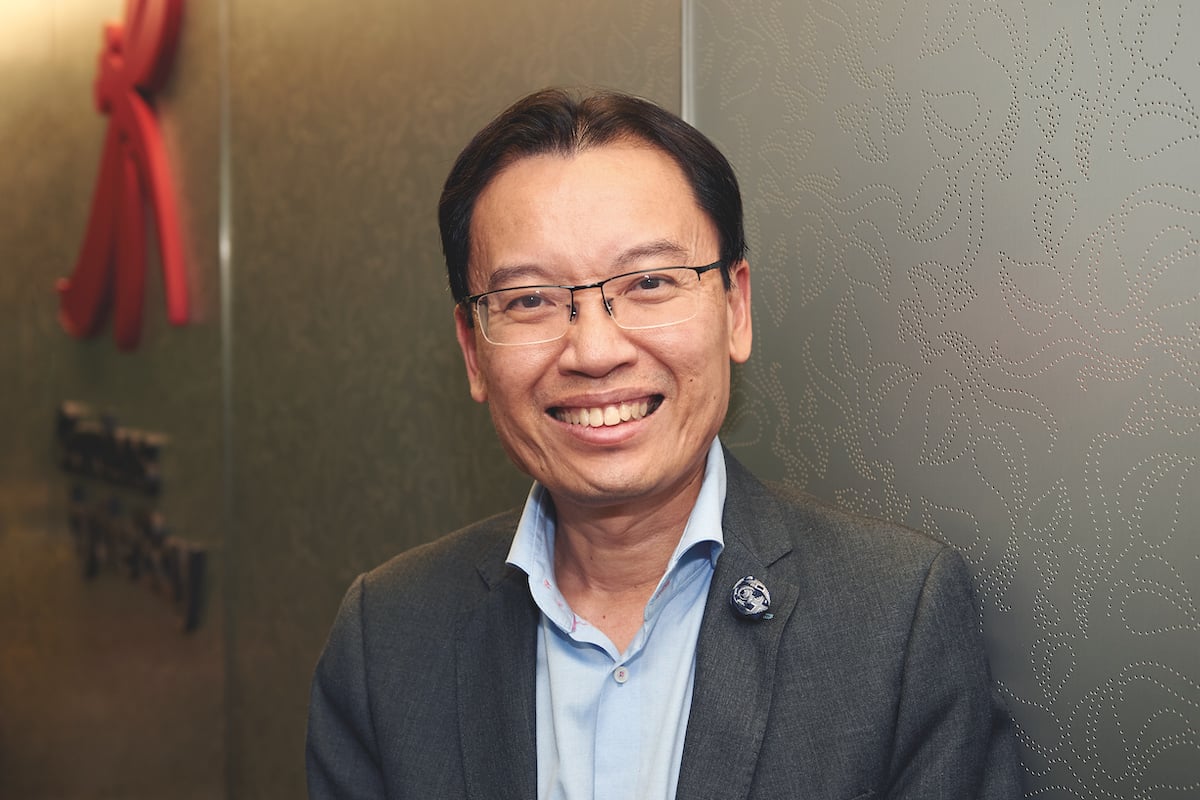
“On this reclaimed land, we’ve brought in biodiversity; both native and exotic plants, to create an environment. Today, the Gardens has become a hotspot for wildlife and migratory birds.” Felix uses this platform as a way to tell the world about sustainability and what they can do about it.
“After they’ve seen the displays in our Cloud Forest conservatory, there is a video that describes what will happen to the earth if the temperature rises by 5°C,” Felix says. “It is very powerful and gripping, using projection technology that calls for action.”
Sustainability principles were at the forefront of the Gardens’ design. For example, the glass in the cooled conservatories allow natural light to enter but reflects infrared light to prevent heat accumulation. Green technology powers the conservatories. “We are the only installation in Singapore that doesn’t take electricity from the electricity grid for cooling – we have our own biomass facility,” Felix says.
“Horticultural waste is collected and transported every night to our biomass facility, which is located underneath the conservatories,” he adds. “They are then burned to generate electricity to power the chillers. We use this story to explain to young children about how to close the carbon cycle.”
Then there are the ‘Supertrees’ that provide shade during the day and a display of lights at night. “We have 18 of them,” Felix explains. “They mimic a real tree because there are solar panels embedded on top to harvest energy, which is then used to power the lights that we use to illuminate at night, or for a light and sound show. People who visit see and listen to these stories and, hopefully, they are touched and will play their part in the sustainability of the world.”
Felix is a horticulturist by training, so when asked about leadership, he responds with an honest, straightforward approach. “I didn’t go to MBA school and learn all the leadership principles,” he says. “But I think leadership is about doing the right thing and then mobilising people to do the same.
“Doing the right thing involves values: integrity, excellence and vision,” he continues. “Then mobilising people to do the right thing requires good interpersonal skills. Being a horticulturist, I believe I have a slight advantage, because those of us who deal with plants always give them tender, loving care, and we apply the same principle to our colleagues and staff.”
While his job takes him around the world to look at plant specimens and landscapes, the part that Felix enjoys the most is being able to bring these plants back to Singapore for visitors to experience. “We have done some exceptional things. When we brought the cherry blossoms to Singapore, the wait to get into the Flower Dome conservatory was two to three hours long,” he says. “We are now trying to do something even more spectacular.
I studied in New Zealand and the US – autumn colours are my favourite. Our researchers are now trying to figure out how we can trigger the leaves to show fall colours as a display for our visitors here.”
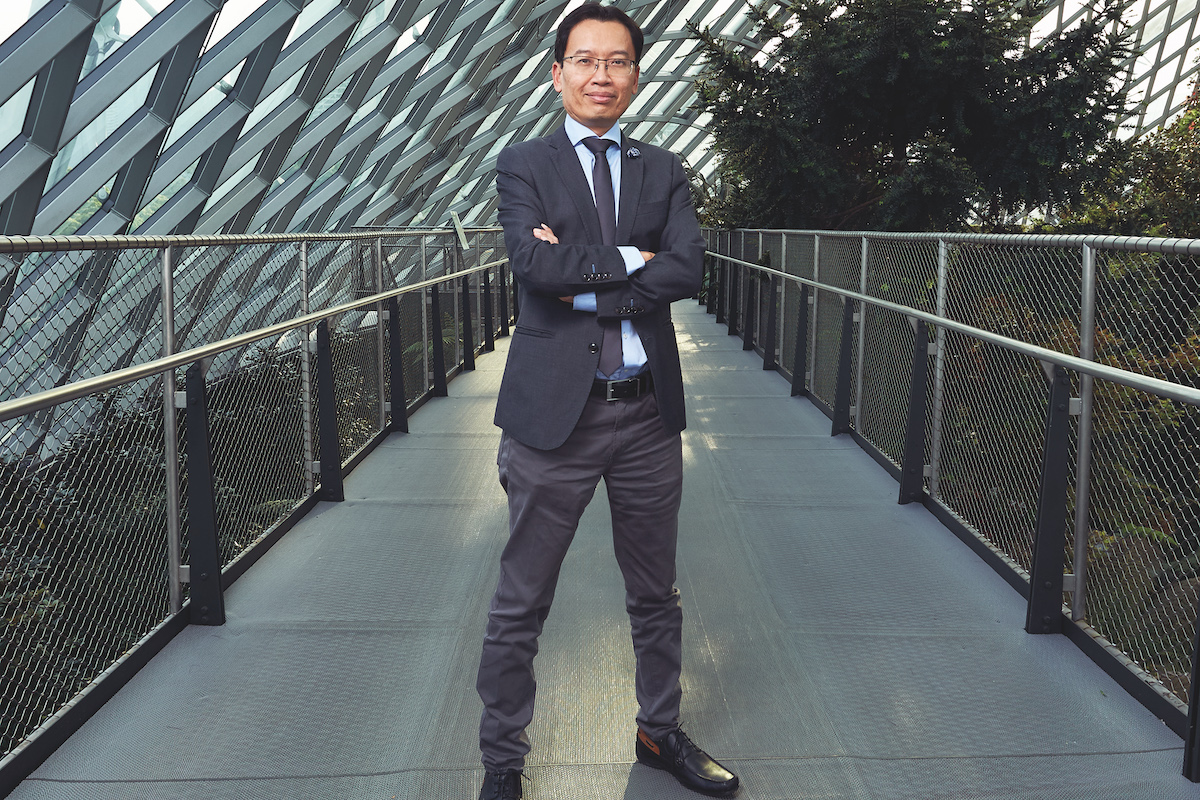
Felix is immensely proud of his 300 colleagues. Together, they have created something special that he believes visitors appreciate. “Singapore doesn’t have a long history,” he says. “It has only been 50 years since our independence. As a small island state, there are very few natural icons. Over the past seven years, my colleagues and I are proud of the fact that we have created something uniquely Singaporean. We try to put our best foot forward for our 35,000 visitors every day.
“We can never change geography. Our outdoor climate will never allow us to grow plants like cherry blossoms and tulips. But I can count on my colleagues – their ingenuity and know-how – to bring about limitless possibilities of nature that Singaporeans otherwise would not be able to see.”
Proudly supported by:
